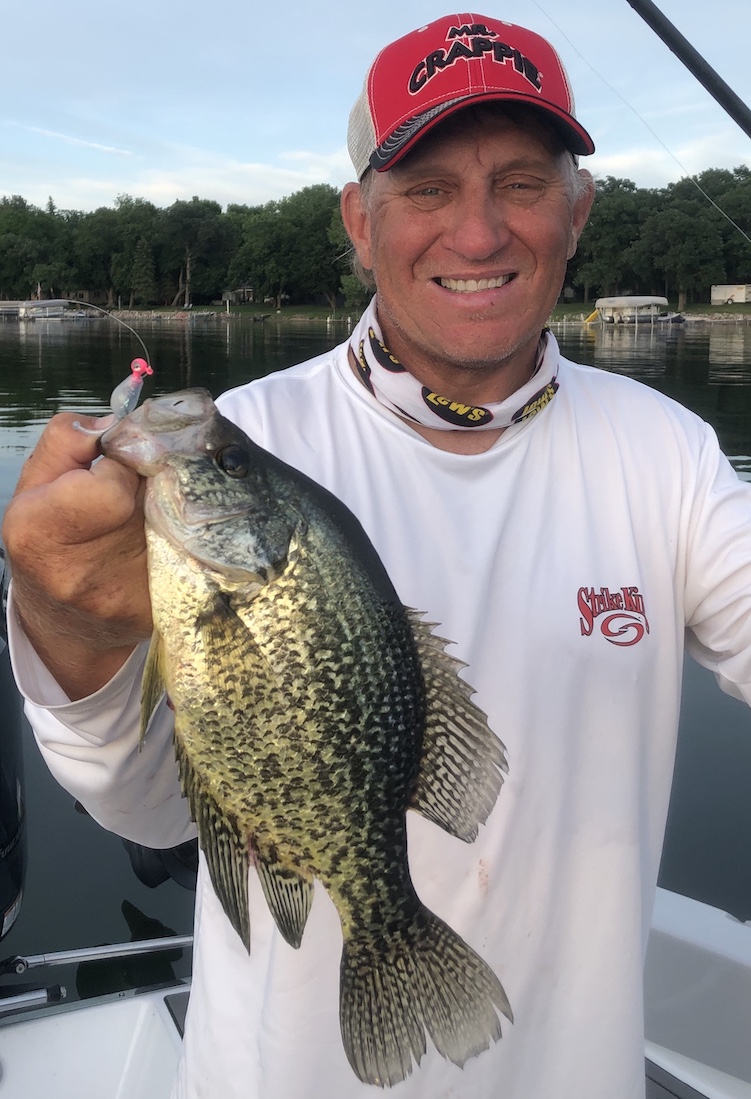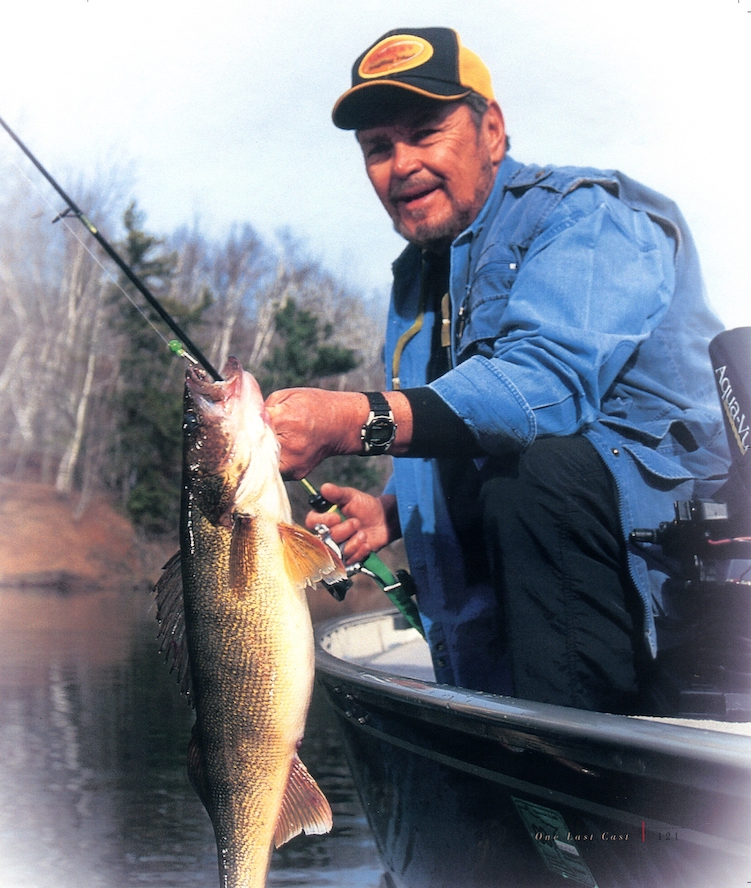News & Stories
Warmer Weather Fishing
Posted by director on April 19, 2021
WARMER WEATHER FISHING
by Bob Jensen
Warmer weather is here. It took a while this year, but as it always does, or at least always has done so far, the inconsistent weather of spring has been or will soon be replaced by the warmer weather of early and mid-summer. It’s going to be warm and even hot in the following weeks and months. When we go fishing, if we want to catch some fish, we need to fish in a way that appeals to fish when the weather is warm. Following are some of the things that we can do to catch fish all through the summer.
The most basic concept of fishing knows no season. Regardless of when you’re fishing, you’ve got to find the fish. The challenge is this: In the spring, most freshwater fish will be in the shallows where they spawn. Now that the spawn has been completed, they will be where the food is. That could be pretty much anywhere in the water system you’re fishing.
Weedlines are often a good starting point. Several species of fish will hang out along the weedline. You’ll find largemouth bass, walleyes, panfish, and northern pike on the weedline. If two anglers are fishing, it works well to have one angler throw a crankbait and the other a jigworm. This way you’re showing the fish two very different presentations. If the fish are hitting one bait better than the other, both anglers should throw that style of bait.
If you employ this technique, the crankbait angler should try a #3XD or #5XD Pro Model crankbait if largemouth are the target or a Lucky Shad if you’re after walleyes. Northern pike will eagerly eat either of these. Also, largemouth will certainly take the Lucky Shad and walleyes will take the XD’s.
The jigworm angler would do well to use an eighth ounce jighead tipped with a 5 or 6 inch Ocho worm. Use the largest worm they’ll take. This is mostly a largemouth presentation, but a walleye will also readily take this set-up. Go to bigger, bulkier plastics if the fish are hitting good, and go to something smaller like a Ned plastic if the fish are being finicky. If they’re finicky try live bait. Usually they’re not that stubborn. If they’re really shut off, try a lighter jighead, a 1/16th ouncer.
In the summer, along the weedline or on deeper structures, sometimes the fish will be scattered, sometimes they’ll be tightly schooled. You might catch one here and one there, or you might discover that you have to be very precise as to where you put your bait. On the weedline, look for points or pockets in the weeds to hold concentrations of fish. On deeper structures, maybe a rockpile or a corner on a large flat will hold schools of walleyes, bass, or crappies.
When you’re fishing deeper structure, it pays big dividends to cruise over the structure with a close eye on your sonar. With the sophistication of today’s sonar, you can determine where the fish are before you drop a line. Generally, if you don’t see something that looks like predator fish or baitfish on the sonar, don’t bother fishing the area. Keep looking for an area that has life.
Some anglers feel that spring and fall fishing can be more productive, but summer fish are eating machines. Put the right bait in the right place and you’re probably going to get bit. And for most of us, getting bit is why we go fishing. In the summer you can get bit a lot.
PHOTO CAPTION---------—Mike Frisch with a big bass that ate an Ocho worm in mid-summer.
Mid-Spring Crappies Offer Fantastic Fishing!
Posted by director on April 12, 2021

Mid- spring crappies
By Mike Frisch
Many anglers, this one included, can’t wait for ice out to head for their favorite crappie lake and wet a line in open water for the season’s first time. Those just after ice out trips sometimes produce good fishing, but at other times the fish seem to be non-existent. The fact is that as the water warms and weather stabilizes during spring, the crappie bite usually gets better. Here are some tips to capitalize on what I call the crappies of “mid-spring.”
Most crappie anglers know that finding the warmest, shallow water during spring up until the spawn is usually key. Warming waters, usually shallow waters, show the first signs of open-water life and draw hungry crappies. Shallow, dark-bottomed bays are classic early season spots, as are boat channels, marinas, and other shallow spots that warm quickly.
Just after ice out, the crappies will invade these areas looking to feed, particularly on warm, sunny days. The appearance of a spring cold front, however, often sends these fish scurrying off to deeper waters where the water temperature is more stable. As spring progresses and water temperatures continue to rise and the weather moderates, crappies spend more and more time feeding in the shallows.
Finding spring crappies involves staying on the move and searching various shallow spots. I’ll often hit several spots during a fishing day, keeping an eye on the temperature gauge on my sonar unit in the boat when going from spot-to-spot. Shore anglers, though more limited in mobility, often do well this time of the year too as shallow areas that hold fish are often accessible from the bank now too.
Small panfish jigs tipped with crappie minnows and fished below bobbers usually produce fish, particularly when the fish are finicky. More aggressive fish, on the other hand, are often very susceptible to small jigs and plastics combos. I’ve become a big fan of the Mr. Crappie soft baits in recent years and prefer the Crappie Thunder and 2” Tubes during spring. Hungry crappies readily hit soft baits and usually several fish can be caught on the same bait without rebaiting. Regardless whether tipping a jig with live bait or plastic, fishing the combination a couple feet below a bobber and casting near shallow cover like weeds, brush, and timber usually results in bites if fish are present.
Bobbers and jigs go hand in hand for spring crappies, however, a cast and retrieve approach can also yield good catches on some days and can be a good “search” presentation as well. For this method, I’ll rig a Mr. Crappie ShadPole on a small jig, cast it out, and slowly retrieve it back.
Regardless whether fishing a bobber or cast and retrieve fishing, using your tolling motor to quietly approach and work potential fishing spots is usually important now. Shallow, spring crappies are notorious for being spooky and avoiding excess noise that may easily scatter these wily fish will probably up your catch.
Spring and crappies go hand in hand, especially as the season progresses and the weather stabilizes. Following some of the tips just provided can, in fact, probably help you capitalize on the hot mid-spring crappie bite this season!
As always, good luck on the water and remember to include a youngster in your next outdoor adventure!
Mike Frisch hosts the popular Fishing the Midwest TV series. Visit www.fishingthemidwest to see more fishing tips and view recent TV episodes as well!
Photo – Mike Frisch cast a ShadPole to catch this crappie.
Bob's Look Back - Ron Lindner
Posted by director on April 6, 2021

Bob's Look Back - RON LINDNER
by Bob Jensen
I first met Ron Lindner when I lived in Brainerd in the late 70’s. He and Al were just starting The In-Fisherman empire, but it wasn’t an empire at that point. Ron invited me to their offices to see what they did and what they were going to do. They had hired one of their first staff members: Maybe he was the first staffer. Dave Csanda. I moved away from Brained a few months later and lost touch with Ron.
A few years later Ron and Al bought Camp Fish in Walker Minnesota. I was on the staff there at the time. That’s when I really got to know Ron. In the fall, Camp Fish hosted the Camp Fish Celebrity Jamborees. The Jamborees were three consecutive weekends of hardcore fishing. They were a fund-raiser for Camp. People paid about $400.00 for a weekend of fishing with some of the best fishermen in the Midwest as well as some nationally known anglers. This was what many anglers of that era refer to as the Golden Age of the Fishing Industry.
I usually stayed at Camp in between the Jamborees and just went fishing. Ron would usually come up on Wednesday or Thursday and he and I would head out. We would fish four or five lakes a day. Ron had a book that showed area lakes and the roads and trails that led to them. We would head down roads that sometimes turned into logging trails in search of under-explored lakes, mostly largemouth bass lakes. Every now and then, as we were heading down an under-traveled trail, Ron would say, “Wait a minute, Mr. Jensen, dis’ ain’t a road. Back up”. I honed my backing-up-with-a-trailer skills on those under-traveled trails. And, every now and then, we found a lake that was under-fished. Wonderful times.
Ron was an outstanding angler. He introduced me to Leech Lake largemouth bass before Leech Lake became a popular largemouth fishery. One day we were fishing the rice and reeds with spinnerbaits, and we were catching good numbers of really nice bass. Ron declared that “that point up there looks snakish” meaning it looked like a place where a northern pike would live. We hadn’t caught or seen a pike all day, but sure enough, we got to the point and Ron caught a pike right where he said there would be one. I learned that when Ron said something was going to happen, it usually happened. Maybe not exactly the way he thought it would happen, but there would be an occurrence.
A few years later we were on the Rainy River below International Falls. We were going to do a smallmouth bass episode of Fishing the Midwest television. The night before, Ron said that we would “catch one hundred smallmout’ bass tomorrow”. I was looking forward to that. The next day, after just a few minutes on the river, Ron declared, “Tings have changed. We ain’t gonna’ catch one hundred smallmout’ bass today”. He was right. We caught sixty. I counted.
There are so many other stories of my time in the boat and traveling with Ron that I remember fondly. There are also a good number of memorable mishaps. Broken rods, improperly opened tackleboxes that resulted in breakage, and electric motors that had been running perfectly but were all of the sudden not running perfectly. Also Ron’s self-manufactured burglar alarm that was installed on our travel vehicle at some boat landings. I have wonderful memories of the bass and the breakage that I had the good fortune to share with Ron Lindner, one of the true pioneers and legends in the world of fishing.
